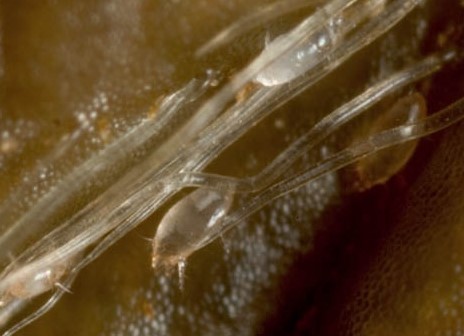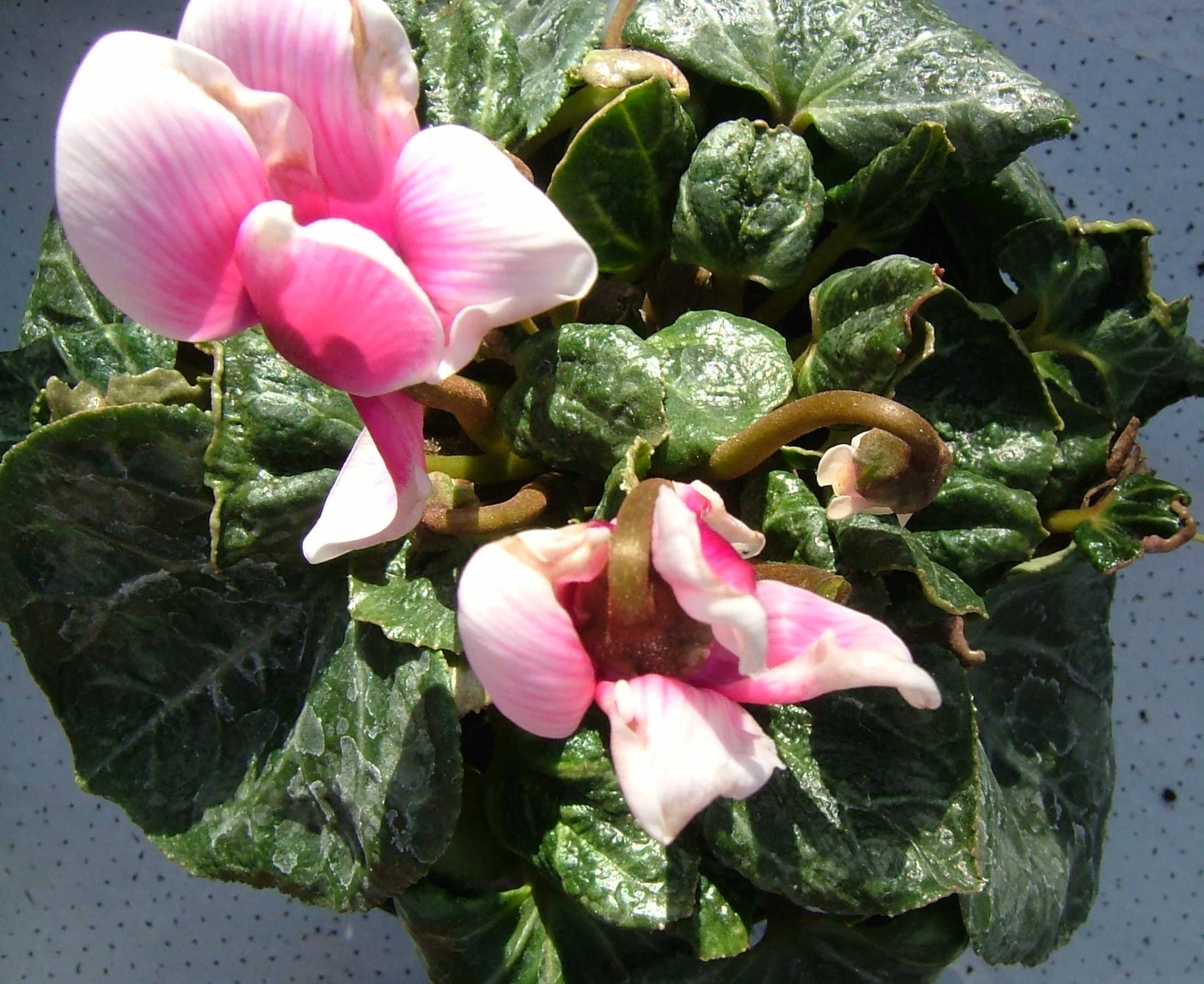Please click here to access the main AHDB website and other sectors.
- Home
- Knowledge library
- Tarsonemid mites
Tarsonemid mites
How to identify tarsonemid pest species and their symptoms on host plants and gain an appreciation of pest biology to aid in the development of effective control strategies. This section includes details of the broad mite (Polyphagotarsonemus latus), bulb scale mite (Steneotarsonemus laticeps) and cyclamen mite (Phytonemus pallidus).
Back to: The biology and control of mites in ornamentals
Identification and symptoms
Tarsonemid mites are tiny (less than 0.3 mm long) and hard to see, even with a hand lens. When feeding, the
mites inject toxic saliva into the plant, causing a range of symptoms, including: leaf scarring, inward curling of leaf edges, leaf crinkling, browning and thickening, distortion of new growth, stunting and petal flecking.
Broad mite (Polyphagotarsonemus latus) adults are whitish and translucent, or sometimes greenish or yellowish. Larvae are similar to the adults but smaller and six-legged. The eggs are comparatively large, translucent, oval in shape with rows of white studs.
Bulb scale mite (Steneotarsonemus laticeps) invades bulbs in August and September as they shrink and then move onto developing shoots to feed as bulbs expand in the spring. The mites and larvae are pale brown and translucent and eggs are oval and translucent-whitish.
Cyclamen mite (Phytonemus pallidus) adults are pale yellowish brown and translucent; the larvae are very similar to broad mite and the eggs of this species are smooth, whitish and elliptical. A microscope is essential to see all the stages effectively.
Other tarsonemid species of increasing importance in the ornamentals industry include the fern mite (Hemitarsonemus tepidariorum) and the violet mite (Tarsonemus violae).
Biology
The mites occur on the underside of young expanding leaves or within growing points, where humidity levels are highest and light levels are low; they are rarely found on lower leaves. Short-range dispersion within a plant and from plant to plant occurs by males transporting female pupae and some adult females, so ‘hotspots’ of mite damage can occur. Longer-range dispersion within glasshouses can occur on
workers’ clothing, via infested cuttings or on air currents. The life cycle is dependent upon temperature but is relatively short: at 15°C it takes about 15 days, and at 20°C about 10 days from egg to adult.
In most species, there are four stages: egg, larva, pupa and adult. Some tarsonemids will retreat into damp soil during periods of low humidity. Adult tarsonemids can withstand freezing conditions but are sensitive to temperatures above 35°C.
Host plants
Tarsonemid mites damage a wide range of ornamental plants grown under protection. Most tarsonemids cannot penetrate mature stems and leaves, but the broad mite injects salivary toxins to deform the foliage, making it suitable for feeding.
Broad and cyclamen mites can be found on many bedding and pot plant crops, such as: Antirrhinum, Ageratum, Azalea, Begonia, Celosia, Chrysanthemum, Cyclamen, Dahlia, Dieffenbachia, Fuchsia, Gerbera, Gloxinia, Hedera, New Guinea Impatiens, Pelargonium, Saintpaulia, Viola and Zinnia. On nursery stock, they can be problematic on: Aconitum, Aster, Clematis, Delphinium, Escallonia, Fatsia and Hibiscus.
Bulb scale mites can be found on Amaryllis and Narcissus, while the fern mite can be found on Asplenium and Polystichum.
Useful links
For more information on the bulb scale mite, see the AHDB Narcissus Manual.
Authors
Authors – Elysia Bartel and Jude Bennison, ADAS Horticulture.
Original author (08/05 ‘The biology and control of two-spotted spider mite in nursery stock’ and 12/09 ‘The biology and control of mites in pot and bedding plants’) – John Buxton, ADAS.
Got a question? Ask a member of the team:
Web page content correct as of June 2021.
Adult broad mites at high magnification

Image © Fera Science Ltd.
Flower and leaf distortion on cyclamen as a result of mite feeding

Image © AHDB.

